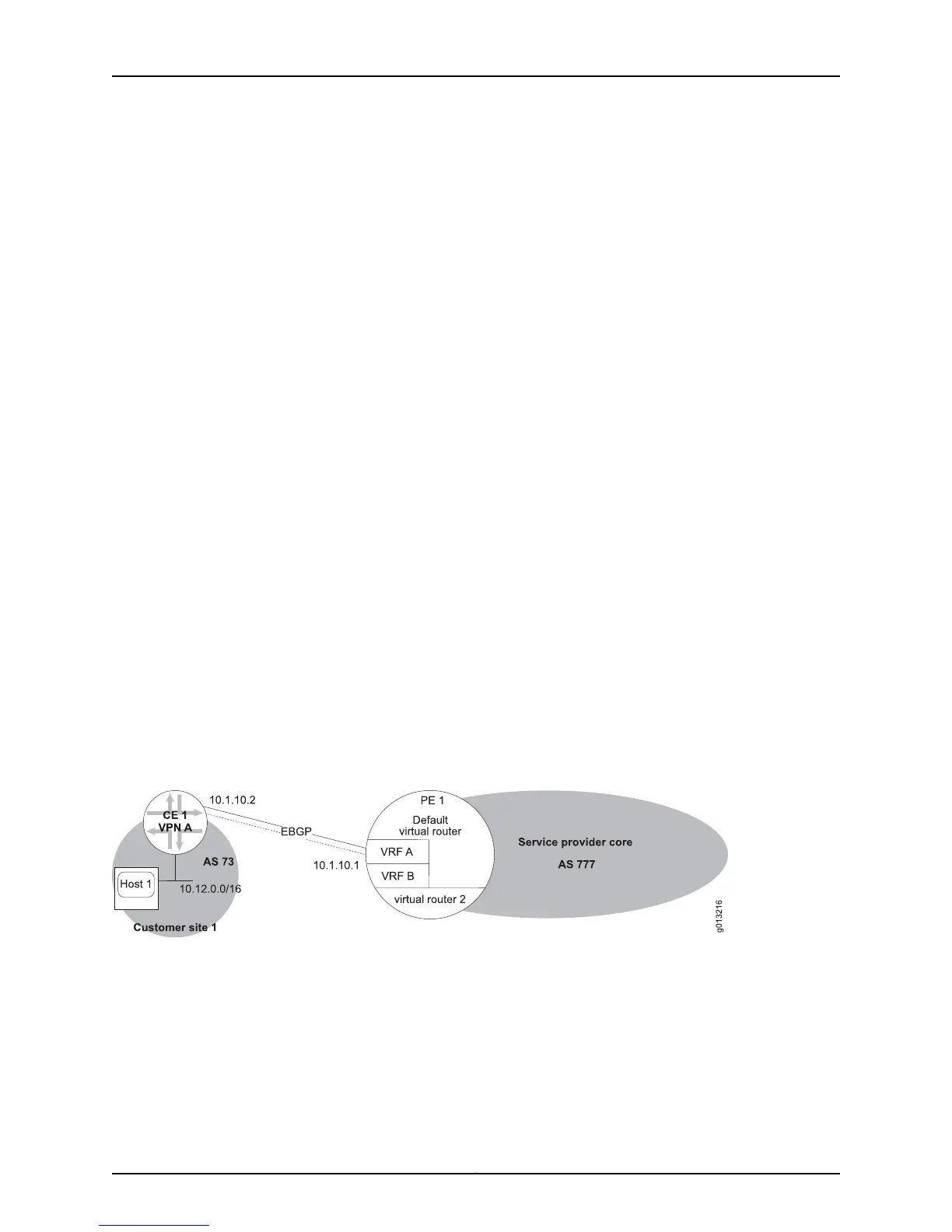• Use to specify neighbors to exchange routes with from within the current address
family.
• Takes effect immediately.
• If dynamic capability negotiation was not negotiated with the peer, the session is
automatically bounced so that the exchanged address families can be renegotiated
in the open messages when the session comes back up.
• If dynamic capability negotiation was negotiated with the peer, BGP sends a capability
message to the peer to advertise or withdraw the multiprotocol capability for the
address family in which this command is issued.
• If a neighbor is activated, BGP also sends the full contents of the BGP routing table of
the newly activated address family.
• Example
host1:vr1(config-router-af)#neighbor 192.168.1.158 activate
• Use the no version to indicate that routes of the current address family should not be
exchanged with the peer. Use the default version to remove the explicit configuration
from the peer or peer group and reestablish inheritance of the feature configuration.
• See neighbor activate.
Configuring PE-to-CE BGP Sessions
If you have established a BGP session between a PE and a particular CE router, you can
configure BGP sessions with all the other customer sites within the VPN so that they can
learn the routes to the particular CE router.
Configuring the PE-to-CE external BGP session is a bit different from the usual external
BGP session. You must configure the session in the context of the IPV4 unicast address
family of the VRF. Consider the topology shown in Figure 95 on page 445.
Figure 95: PE-to-CE Session
You configure the characteristics of VRF A, the global BGP attributes, the address family
for the session, and BGP attributes relevant to the VRF or address family.
host1(config)#ip vrf vrfa
host1(config-vrf)#rd 777:5
host1(config-vrf)#route-target both 777:5
host1(config-vrf)#exit
host1(config)#interface gigabitEthernet 1/0
host1(config-if)#ip vrf forwarding vrfA
445Copyright © 2010, Juniper Networks, Inc.
Chapter 6: Configuring BGP-MPLS Applications

